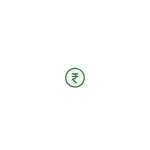Top Strategies for Trading in Bank Nifty Options

Bank Nifty is a benchmark comprising the top 12 banking companies listed on the National Stock Exchange (NSE). These stocks represent the performance of India’s most prominent banking institutions and help investors track their performance.
Many individuals purchase Nifty Bank options to indirectly invest in the benchmark index or as a hedge position in order to generate significant returns from India’s banking sector. Now, if you are planning to use these investment vehicles, there are a few tips and strategies which you need to be aware of.
8 Strategies for Trading in Bank Nifty Options
Here are some strategies and tips for trading Bank Nifty Options:
- 5-minute Candlestick Chart
The 5-minute Candlestick Chart strategy is applicable for intraday traders. As the name suggests, you will use a candlestick chart in the 5-minute timeframe. To implement it, you have to pick a point where the first two candles are either showing a bullish trend or a bearish trend.
For situations when both candles show a bullish trend, you have to place your buy order when your target asset’s price reaches the second candle’s high. After it triggers, you can place a stop-loss order at its low.
Inversely, if these candles show a bearish tendency, you must place your buy order at the second candle’s low position. Then, after it triggers, you have to place your stop-loss order on the same candle’s high.
- Sell Trades and Buy Trades
To gain a better understanding of this strategy, let’s divide it into two parts:
- Sell trades
Experts say that when the market’s opening prices show a gap down from the previous day’s closing, there may be a further drop in asset’s price. Under such circumstances, you must analyse a candlestick chart and wait for the gap to get filled. After this happens, you can place a sell order to prevent losses in case of further depreciation in price.
- Buy trades
For situations when the market opens at a gap up, i.e., the opening price is more than the previous day’s closing value, experts predict a further appreciation in price. So, you should wait till the gap fills up on the candlestick chart and then place a buy order.
Doing so will enable you to secure profits as the asset’s price rises. Now, the gap may not always fill within a day’s span. In such situations, experienced traders recommend that you wait for a few days for the gap to fill up before placing your buy order or look for the next opportunity.
- Long Straddle
Long straddle is a neutral trading strategy that comes in handy when you anticipate significant volatility in the market. To implement it, you must purchase a call and put option at the same strike price with the same expiration date.
Your breakeven point for the upper side will be the sum of the call option’s strike price and the premium amount. Whereas, for the lower side, the breakeven will be equal to the sum of the put option’s strike price and premium paid.
Now, depending on price movements, you can exercise either of the options and the profit potential for both sides is unlimited. The maximum loss that can occur in this case is the sum of premium amounts if you do not exercise any of the options.
- Short Straddle
The short straddle strategy is for times when you anticipate a very low amount of volatility in the stock market. In order to use this strategy, you need to sell a call and put an option at the same strike price with the same expiration date.
Now, under such circumstances, your upper breakeven point will be equal to the sum of the short call’s strike price and net premiums received. Inversely, your lower breakeven point will be equal to the sum of the short put’s strike price and net received premiums.
While using this strategy, the maximum profit can occur when both options are not exercised and the profit amount is the sum of premiums received. Here, the maximum loss is undefined. So, don’t forget to put a stop-loss order while using this strategy.
- Naked Calls or Puts
You can utilise these derivatives contracts when you predict a significant rise or fall in Nifty Bank prices. When the prices start to rise, you can buy a naked call option to secure profits. Alternatively, when the index value starts to depreciate, using a naked put option will help you reap gains. In both cases, it is mandatory for you to use a stop-loss order in case of price reversal. The maximum loss you can incur will be equal to the premium that you pay for buying the call/put option.
- Bull Call Spread
A bull call spread is a derivative strategy that is useful when you are feeling moderately bullish. It involves buying one At The Money (ATM) call, and selling an Out for The Money (OTM) call, both having the same expiry date.
This creates a range that will limit your losses but, at the same time, put a cap on your profits. The maximum loss that you can face while using this strategy is the difference between the two call options premiums.
- Bear Call Spread
A bear call spread is a trading strategy that you can use when the Bank Nifty index is showing mildly bearish sentiments. In this case, you sell an In The Money (ITM) call option and purchase an OTM call option in order to hedge against unexpected price rises.
In this strategy, your profits are equal to the net premium you receive from selling the call option and the risk is equal to the difference in the strike prices after subtracting the net premium.
- Long Call Butterfly
You can use this three-part strategy when you anticipate very low volatility in Bank Nifty index prices. It is a combination of a bull call spread and bear call spread that includes buying an ITM and an OTM call and selling two ATM calls.
All the options should have their strike prices at an equal distance from their current value. Your maximum risk in this strategy is equal to the premiums you pay. The maximum reward you can get is the difference between the adjacent strike prices after deducting the net premium debit.
Understanding the Bank Nifty No Loss Strategy
The Bank Nifty No Loss Strategy is a planned approach designed to protect traders from big losses while trading in the Bank Nifty index. This strategy mainly uses options to defend against possible downturns in the market, aiming to reduce risk. Let’s take a general overview of to help you understand better:
Identifying the Trend
The first step is to use tools for technical analysis to figure out the current trend of the Bank Nifty index. Knowing if the trend is going up (bullish) or down (bearish) helps traders decide their approach in the market.
Setting Stop Loss Levels
It’s important to decide on stop loss levels. These levels act like safety nets, limiting potential losses if the market goes in an unexpected direction. These stop-loss orders are usually based on specific technical factors like support and resistance levels.
Using Options for Hedging
Options are crucial in this strategy. They allow traders to agree to buy or sell Bank Nifty contracts at a set price within a certain period. By using put or call options smartly, traders can balance out possible losses and manage their risk better.
Regular Monitoring and Adjustment
Keeping a close eye on the Bank Nifty index and changing hedge positions when needed is key. The market changes often, so the strategy, including stop loss levels and options positions, may need to be updated regularly.
Key Strategies in the Bank Nifty No Loss Plan
Selling Covered Calls
In this method, traders sell call options on Bank Nifty shares they already have. The money earned from these sales is their income. This strategy is good when the Bank Nifty index isn’t expected to rise much. But, if the index increases significantly, the chance for bigger profits might be limited.
Selling Cash-Secured Puts
Here, a trader sells put options, planning to buy the underlying asset at a lower price if the option is used. The money received from this is the income. This method is useful when the Bank Nifty is stable or going up. However, the risk is if the index drops below the strike price, forcing the trader to buy at a higher-than-desired price.
Iron Condor Strategy
This involves selling a call and a put option at different prices but with the same expiry date. The trader makes money if the Bank Nifty stays between these prices. The main income is the premium received, and the risk is limited to the range of the strike prices.
Risks in Bank Nifty Options Strategies
In trading Bank Nifty options, just like in any type of investment, there’s no such thing as a completely risk-free strategy. A trader can only aim to lessen, not eliminate, the risks involved. Here’s a look at the risks linked to specific strategies in Bank Nifty options trading:
Risk with Covered Call Strategy
Even experienced traders can face losses with this strategy. If the price of the underlying asset, in this case, Bank Nifty, drops a lot, you could lose money. Also, there’s a chance that you might have to sell your shares at the strike price if the Bank Nifty price goes above this level. This is a key risk to consider before using the covered call strategy.
The Risk with Cash-Secured Put Strategy
With this strategy, a big drop in the price of the underlying asset can lead to losses. It’s crucial to have enough cash ready in case you need to buy the shares when the option is exercised. This means setting aside a significant amount of money, which can be risky if the market doesn’t move in your favour.
Final Word
These are some of the strategies that you can use while trading Bank Nifty options. The high volatility in this market segment may help you gain quick profits; however, this also increases the risk of your investments. Thus, it is advisable that you assess your risk appetite and investment objectives before taking any decision.
Frequently Asked Questions
What is the contract expiry period for Bank Nifty options?
Bank Nifty monthly options have a maximum expiration period of 3 months. When the first month expires, the exchange introduces new contracts with new strike prices for both call and put options. They also come with 3-month durations. Option contracts for bank nifty are also available on a weekly basis.
What is the lot size of Bank Nifty contracts?
The lot size of Bank Nifty contracts is 25. Individuals can trade in multiples of this number, i.e., 25, 50, 75, etc.
How many Bank Nifty units can I buy/sell per order?
According to NSE’s circular dated August 30, 2022, you can purchase/sell a maximum of 1200 Bank Nifty units or 48 lots per order. This revision came into effect on September 01 2022.
What factors influence the returns of Bank Nifty options?
The Return On Investment (ROI) of Bank Nifty Options depends on the performance of the banking sector. On top of that, volatility, strike price, and days left till the contract expiry are other factors that affect the price movements and your ROI.
What is Bank Nifty Option Trading?
Bank Nifty Option trading is buying or selling rights to trade the Bank Nifty Index at a set price within a specific period, allowing speculation on index movement without owning the asset.
What are the benefits and risks of Bank Nifty Option Trading?
It offers the ability to control a large position with a small investment and profits in various market conditions but involves risks like potential total investment loss and market volatility.
How important is setting realistic targets and stopping losses in Bank Nifty Option Trading?
Setting realistic targets and stopping losses are crucial to managing risk exposure and limiting potential losses in trading.






